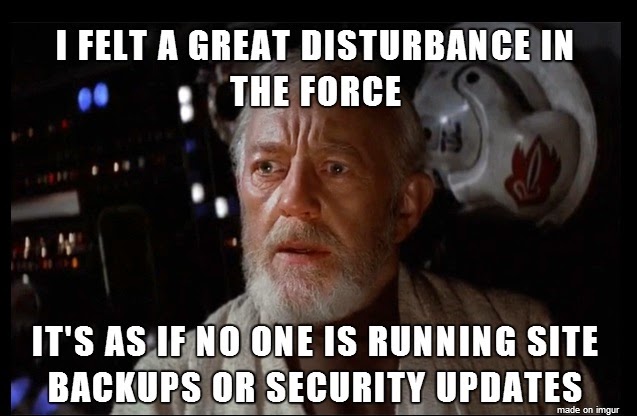I recently was tasked with this ticket:
Please add new login Domain\Bob to server MyServer. Grant the login the same permissions as Domain\Mary.
On the face of it, this seems relatively straightforward, right? It is the kind of request that we all get from time to time, whether as an ad-hoc task or as part of a larger project, such as a migration.
The catch of course is that it isn't that easy - how do you know what permissions Mary has?
- Is Mary a member of any server-level roles?
- What specific individual server permissions does she have?
- What database(s) is she a member of? What database role(s) is she in?
- What specific object(s) does she have permissions to? (this is often the killer)
Each of these items can be manually checked, of course - you can browse to Security>>Logins and right-click on Mary to see what server-level roles she is in and which databases she has access to, and then you can browse to each database and check what roles she is in and which objects she has explicit permissions on....
Sounds like fun, right?
As with all things SQL, almost anything you can do via the GUI can also be done programmatically (although it can be ugly).
If you read my blog with any regularity you know that I am a firm believer in building on the work of others while granting credit where due - that is, there is no need to reinvent the wheel when you have a freely available example to start with. Over time I have compiled links in my personal store to code created by other people for each of the components of the task at hand:
Each of these gave me part of the answer to my question about Mary, but why not roll them all together? After some brief digging I couldn't find someone who had taken that next step.
I took the code from each of the three sources above (thanks Kendal, Phillip, and Wayne!) and modified them to play nicely together, including wrapping them in sp_msforeachdb as relevant and adding WHERE clauses to filter for an individual login.
I considered what I might use this code for, and then took one further step - I took the code from
sp_help_revlogin (thanks Microsoft!) and added it to the start of my new code block. This allows me to script the login itself at the beginning in case I want to transfer the login and its permissions to a new server (or replace them if something goes wrong on the original server!)
--
In my Bob and Mary case, I ran the code, and ran a find/replace for Mary>>Bob - this gave me a script to create Domain\Bob and grant him all of the same role memberships and permissions as Domain\Mary.
One note - if you run this for SQL logins (rather than Windows logins) you have the issue of the login SID (Security Identifier). That is one of the big bonuses of using sp_help_revlogin is that it scripts out the SID of the login, so that when you try to re-create that login it maintains its SID for all security chains. Of course for what we are doing in this example you wouldn't want that - if Mary and Bob were SQL logins, you would want to take one additional step in the final script of editing the CREATE LOGIN statement to remove the @sid parameter (since your new login Bob couldn't use Mary's SID),
--
The resulting script takes an input parameter of a login name (or NULL) and then outputs CREATE/GRANT/etc. commands for the login, role memberships, and object permissions of that login (or of all logins if NULL is specified).
- First, sp_help_revlogin (and sp_hexadecimal) is created if it doesn't exist - if it does exist it is ALTER'ed with this recent version
- sp_help_revlogin is run to generate a CREATE LOGIN
- Kendal's code (slightly modified) is run to generate sp_addsrvrolemember and GRANT/DENY statements for server-level security
- Wayne's code (again modified) is run to generate CREATE USER statements for the databases
- Phillip's code (modified) is run to generate sp_AddRoleMember statements for database roles
- Finally, another piece of Wayne's code (from that same post) is run to generate the GRANT/DENY statements for individual database object permissions
A few caveats - because I include the CREATE/ALTER PROC for sp_help_revlogin and sp_hexadecimal in my script, my actual parameter (@LoginName) to specify your desired login is roughly halfway down the script (after the CREATE/ALTER PROC code) - the easiest way to deal with this is to CTRL-F for "SET @LoginName"
The code outputs via a large number of result sets, so I *strongly* recommend you change your query output from Grid to Text before you run the script.
I have run this against versions from 2005 through 2014 and it has generated successfully.
I am working on improving commenting and error handling. but check it out and let me know what you think and any holes you find (and as with all things on the Web, run it at your own risk).
Hope this helps!
--
NOTE - someone mentioned in a comment that they had trouble accessing the link - I originally didn't publish the script in the blog because the length was prohibitive but here it is:
--
/*
Permissions Scripter v1.0
All code on the web should be examined and run at your own risk!
--
2015/12/16
Andy Galbraith @DBA_ANDY
http://nebraskasql.blogspot.com/
--
IMPORTANT - CTRL-F for 'SET @LoginName' and set the name
Strongly recommend you change the Query output from Grid to Text for best output results
--
Uses code from several sources that I have combined and modifed to work together.
Sources are attributed thoughout but are also noted here:
** Microsoft - sp_help_revlogin - https://support.microsoft.com/en-us/kb/918992
** Kendal Van Dyke @SQLDBA - "Scripting Server Permissions And Role Assignments" - http://www.kendalvandyke.com/2009/01/scripting-server-permissions-and-role.html
** Phillip Kelley - "Generating scripts for database role membership in SQL Server 2005"
http://stackoverflow.com/questions/3265526/generating-scripts-for-database-role-membership-in-sql-server-2005
** Wayne Sheffield @DBAWayne - "script out database users for the selected database" - http://www.sqlservercentral.com/Forums/Topic977700-146-1.aspx
*/
SET NOCOUNT ON
SELECT 'SET NOCOUNT ON;'+CHAR(13)+'USE [MASTER];'+CHAR(13)+'GO'+CHAR(13) as '/* Set Database Context to master */'
USE [master]
GO
/*
Microsoft - sp_help_revlogin - https://support.microsoft.com/en-us/kb/918992
*/
/****** Object: StoredProcedure [dbo].[sp_hexadecimal] Script Date: 10/12/2010 13:58:44 ******/
SET ANSI_NULLS ON
GO
SET QUOTED_IDENTIFIER ON
GO
IF NOT EXISTS (SELECT * FROM INFORMATION_SCHEMA.ROUTINES WHERE ROUTINE_NAME = 'sp_hexadecimal')
EXEC ('CREATE PROC dbo.sp_hexadecimal AS SELECT GETDATE()')
GO
ALTER PROCEDURE [dbo].[sp_hexadecimal]
@binvalue varbinary(256),
@hexvalue varchar(256) OUTPUT
AS
DECLARE @charvalue varchar(256)
DECLARE @i int
DECLARE @length int
DECLARE @hexstring char(16)
SELECT @charvalue = '0x'
SELECT @i = 1
SELECT @length = DATALENGTH (@binvalue)
SELECT @hexstring = '0123456789ABCDEF'
WHILE (@i <= @length)
BEGIN
DECLARE @tempint int
DECLARE @firstint int
DECLARE @secondint int
SELECT @tempint = CONVERT(int, SUBSTRING(@binvalue,@i,1))
SELECT @firstint = FLOOR(@tempint/16)
SELECT @secondint = @tempint - (@firstint*16)
SELECT @charvalue = @charvalue +
SUBSTRING(@hexstring, @firstint+1, 1) +
SUBSTRING(@hexstring, @secondint+1, 1)
SELECT @i = @i + 1
END
SELECT @hexvalue = @charvalue
GO
/****** Object: StoredProcedure [dbo].[sp_help_revlogin] Script Date: 10/12/2010 13:58:51 ******/
SET ANSI_NULLS ON
GO
SET QUOTED_IDENTIFIER ON
GO
IF NOT EXISTS (SELECT * FROM INFORMATION_SCHEMA.ROUTINES WHERE ROUTINE_NAME = 'sp_help_revlogin')
EXEC ('CREATE PROC dbo.sp_help_revlogin AS SELECT GETDATE()')
GO
ALTER PROCEDURE [dbo].[sp_help_revlogin] @login_name sysname = NULL AS
DECLARE @name sysname
DECLARE @type varchar (1)
DECLARE @hasaccess int
DECLARE @denylogin int
DECLARE @is_disabled int
DECLARE @PWD_varbinary varbinary (256)
DECLARE @PWD_string varchar (514)
DECLARE @SID_varbinary varbinary (85)
DECLARE @SID_string varchar (514)
DECLARE @tmpstr varchar (MAX)
DECLARE @is_policy_checked varchar (3)
DECLARE @is_expiration_checked varchar (3)
DECLARE @defaultdb sysname
IF (@login_name IS NULL)
DECLARE login_curs CURSOR FOR
SELECT p.sid, p.name, p.type, p.is_disabled, p.default_database_name, l.hasaccess, l.denylogin FROM
sys.server_principals p LEFT JOIN sys.syslogins l
ON ( l.name = p.name ) WHERE p.type IN ( 'S', 'G', 'U' ) AND p.name <> 'sa'
ELSE
DECLARE login_curs CURSOR FOR
SELECT p.sid, p.name, p.type, p.is_disabled, p.default_database_name, l.hasaccess, l.denylogin FROM
sys.server_principals p LEFT JOIN sys.syslogins l
ON ( l.name = p.name ) WHERE p.type IN ( 'S', 'G', 'U' ) AND p.name = @login_name
OPEN login_curs
FETCH NEXT FROM login_curs INTO @SID_varbinary, @name, @type, @is_disabled, @defaultdb, @hasaccess, @denylogin
IF (@@fetch_status = -1)
BEGIN
PRINT 'No login(s) found.'
CLOSE login_curs
DEALLOCATE login_curs
RETURN -1
END
SET @tmpstr = '/* sp_help_revlogin script ** Generated ' + CONVERT (varchar, GETDATE()) + ' on ' + @@SERVERNAME + ' */'
PRINT @tmpstr
PRINT ''
WHILE (@@fetch_status <> -1)
BEGIN
IF (@@fetch_status <> -2)
BEGIN
PRINT ''
SET @tmpstr = '/* Login: ' + @name+' */'
PRINT @tmpstr
IF (@type IN ( 'G', 'U'))
BEGIN -- NT authenticated account/group
SET @tmpstr = 'CREATE LOGIN ' + QUOTENAME( @name ) + ' FROM WINDOWS WITH DEFAULT_DATABASE = [' + @defaultdb + ']'
END
ELSE BEGIN -- SQL Server authentication
-- obtain password and sid
SET @PWD_varbinary = CAST( LOGINPROPERTY( @name, 'PasswordHash' ) AS varbinary (256) )
EXEC sp_hexadecimal @PWD_varbinary, @PWD_string OUT
EXEC sp_hexadecimal @SID_varbinary,@SID_string OUT
-- obtain password policy state
SELECT @is_policy_checked = CASE is_policy_checked WHEN 1 THEN 'ON' WHEN 0 THEN 'OFF' ELSE NULL END FROM sys.sql_logins WHERE name = @name
SELECT @is_expiration_checked = CASE is_expiration_checked WHEN 1 THEN 'ON' WHEN 0 THEN 'OFF' ELSE NULL END FROM sys.sql_logins WHERE name = @name
SET @tmpstr = 'CREATE LOGIN ' + QUOTENAME( @name ) + ' WITH PASSWORD = ' + @PWD_string + '
HASHED, SID = ' + @SID_string + ', DEFAULT_DATABASE = [' + @defaultdb + ']'
IF ( @is_policy_checked IS NOT NULL )
BEGIN
SET @tmpstr = @tmpstr + ', CHECK_POLICY = ' + @is_policy_checked
END
IF ( @is_expiration_checked IS NOT NULL )
BEGIN
SET @tmpstr = @tmpstr + ', CHECK_EXPIRATION = ' + @is_expiration_checked
END
END
IF (@denylogin = 1)
BEGIN -- login is denied access
SET @tmpstr = @tmpstr + '; DENY CONNECT SQL TO ' + QUOTENAME( @name )
END
ELSE IF (@hasaccess = 0)
BEGIN -- login exists but does not have access
SET @tmpstr = @tmpstr + '; REVOKE CONNECT SQL TO ' + QUOTENAME( @name )
END
IF (@is_disabled = 1)
BEGIN -- login is disabled
SET @tmpstr = @tmpstr + '; ALTER LOGIN ' + QUOTENAME( @name ) + ' DISABLE'
END
PRINT @tmpstr
END
FETCH NEXT FROM login_curs INTO @SID_varbinary, @name, @type, @is_disabled, @defaultdb, @hasaccess, @denylogin
END
CLOSE login_curs
DEALLOCATE login_curs
RETURN 0
GO
DECLARE @LoginName sysname
/*
SET LOGIN NAME!!!!
*/
SET @LoginName = 'sa'
/*
For all Logins set to NULL
SET @LoginName = NULL
*/
EXEC sp_help_revlogin @login_name = @LoginName
PRINT ''
/*
Kendal Van Dyke @SQLDBA - "Scripting Server Permissions And Role Assignments" - http://www.kendalvandyke.com/2009/01/scripting-server-permissions-and-role.html
Modifed by me to filter for an individual login if one is specified
*/
/* Generate statements to create server permissions for SQL logins, Windows Logins, and Groups */
-- Role Members
IF @LoginName is NOT NULL
SELECT 'EXEC sp_addsrvrolemember @rolename =' + SPACE(1)
+ QUOTENAME(usr1.name, '''') + ', @loginame =' + SPACE(1)
+ QUOTENAME(usr2.name, '''') +';' AS '/* Server Role Memberships */'
FROM sys.server_principals AS usr1
INNER JOIN sys.server_role_members AS rm ON usr1.principal_id = rm.role_principal_id
INNER JOIN sys.server_principals AS usr2 ON rm.member_principal_id = usr2.principal_id
and usr2.name = @LoginName
ORDER BY rm.role_principal_id ASC
ELSE
SELECT 'EXEC sp_addsrvrolemember @rolename =' + SPACE(1)
+ QUOTENAME(usr1.name, '''') + ', @loginame =' + SPACE(1)
+ QUOTENAME(usr2.name, '''') +';' AS '/* Server Role Memberships */'
FROM sys.server_principals AS usr1
INNER JOIN sys.server_role_members AS rm ON usr1.principal_id = rm.role_principal_id
INNER JOIN sys.server_principals AS usr2 ON rm.member_principal_id = usr2.principal_id
-- Permissions
IF @LoginName is NOT NULL
SELECT server_permissions.state_desc COLLATE SQL_Latin1_General_CP1_CI_AS
+ '' + server_permissions.permission_name COLLATE SQL_Latin1_General_CP1_CI_AS
+ ' TO [' + server_principals.name COLLATE SQL_Latin1_General_CP1_CI_AS
+ '];' AS '/* Server Level Permissions */'
FROM sys.server_permissions AS server_permissions WITH ( NOLOCK )
INNER JOIN sys.server_principals AS server_principals WITH ( NOLOCK ) ON server_permissions.grantee_principal_id = server_principals.principal_id
WHERE server_principals.type IN ( 'S', 'U', 'G' )
and server_principals.name = @LoginName
ORDER BY server_principals.name,
server_permissions.state_desc,
server_permissions.permission_name
ELSE
SELECT server_permissions.state_desc COLLATE SQL_Latin1_General_CP1_CI_AS
+ '' + server_permissions.permission_name COLLATE SQL_Latin1_General_CP1_CI_AS
+ ' TO [' + server_principals.name COLLATE SQL_Latin1_General_CP1_CI_AS
+ '];' AS '/* Server Level Permissions */'
FROM sys.server_permissions AS server_permissions WITH ( NOLOCK )
INNER JOIN sys.server_principals AS server_principals WITH ( NOLOCK ) ON server_permissions.grantee_principal_id = server_principals.principal_id
WHERE server_principals.type IN ( 'S', 'U', 'G' )
ORDER BY server_principals.name,
server_permissions.state_desc,
server_permissions.permission_name
/*
Wayne Sheffield @DBAWayne - "script out database users for the selected database" - http://www.sqlservercentral.com/Forums/Topic977700-146-1.aspx
Modified by me to run inside sp_msforeachdb and to filter for an individual login if one is specified
Also added COLLATE DATABASE_DEFAULT statements to handle databases with collations different from the instance
*/
DECLARE @strsql nvarchar(4000)
PRINT '/* Database Users */'
IF @LoginName is not NULL
set @strsql = 'SELECT ''/* ? */'';SELECT ''USE [?];
GO
IF NOT EXISTS (SELECT 1 FROM sys.database_principals WHERE name = '' +
QuoteName(dp.name, char(39)) COLLATE DATABASE_DEFAULT + '')
CREATE USER '' + QuoteName(dp.name) +
IsNull('' FOR LOGIN '' + QuoteName(sp.name),'''') +
IsNull('' WITH DEFAULT_SCHEMA = '' + QuoteName(dp.default_schema_name),'''') + '';''
FROM [?].sys.database_principals dp
LEFT JOIN [?].sys.server_principals sp
ON sp.sid = dp.sid
WHERE dp.type like ''[GUS]''
and dp.name = '''+@LoginName+''''
ELSE
set @strsql = 'SELECT ''/* ? */'';SELECT ''USE [?];
GO
IF NOT EXISTS (SELECT 1 FROM sys.database_principals WHERE name = '' +
QuoteName(dp.name, char(39)) COLLATE DATABASE_DEFAULT + '')
CREATE USER '' + QuoteName(dp.name) +
IsNull('' FOR LOGIN '' + QuoteName(sp.name),'''') +
IsNull('' WITH DEFAULT_SCHEMA = '' + QuoteName(dp.default_schema_name),'''') + '';''
FROM [?].sys.database_principals dp
LEFT JOIN [?].sys.server_principals sp
ON sp.sid = dp.sid
WHERE dp.type like ''[GUS]'''
EXEC sp_msforeachdb @strsql
/*
Phillip Kelley - "Generating scripts for database role membership in SQL Server 2005"
http://stackoverflow.com/questions/3265526/generating-scripts-for-database-role-membership-in-sql-server-2005
Modified by me to run inside sp_msforeachdb and to filter for an individual login if one is specified
*/
PRINT '/* Database Role Memberships */'
IF @LoginName is not NULL
set @strsql = 'SELECT ''/* ? */'';
SELECT ''USE [?];
GO
EXECUTE sp_AddRoleMember '''''' + roles.name + '''''', '''''' + users.name + ''''''''+'';''
from [?].sys.database_principals users
inner join [?].sys.database_role_members link
on link.member_principal_id = users.principal_id
inner join [?].sys.database_principals roles
on roles.principal_id = link.role_principal_id
where users.name = '''+@LoginName+''''
ELSE
set @strsql = 'SELECT ''/* ? */'';
SELECT ''USE [?];
GO
EXECUTE sp_AddRoleMember '''''' + roles.name + '''''', '''''' + users.name + ''''''''+'';''
from [?].sys.database_principals users
inner join [?].sys.database_role_members link
on link.member_principal_id = users.principal_id
inner join [?].sys.database_principals roles
on roles.principal_id = link.role_principal_id'
EXEC sp_msforeachdb @strsql
/*
Wayne Sheffield @DBAWayne - "script out database users for the selected database" - http://www.sqlservercentral.com/Forums/Topic977700-146-1.aspx
Modified by me to run inside sp_msforeachdb and to filter for an individual login if one is specified
*/
PRINT '/* Database Object Permissions */'
IF @LoginName is not NULL
set @strsql = 'SELECT ''/* ? */'';
SELECT ''USE [?];
GO
''+ dp.state_desc COLLATE SQL_Latin1_General_CP1_CI_AS + '''' +
dp.permission_name COLLATE SQL_Latin1_General_CP1_CI_AS +
'' ON '' + QuoteName(ss.name) + ''.'' + QuoteName(so.name) +
'' TO '' + QuoteName(dp2.name) + '';''+CHAR(13)
FROM [?].sys.database_permissions dp
JOIN [?].sys.database_principals dp2
ON dp2.principal_id = dp.grantee_principal_id
JOIN [?].sys.objects so
ON so.object_id = dp.major_id
JOIN [?].sys.schemas ss
ON ss.schema_id = so.schema_id
WHERE dp2.name = '''+@LoginName+''''
ELSE
set @strsql = 'SELECT ''/* ? */'';
SELECT ''USE [?];
GO
''+ dp.state_desc COLLATE SQL_Latin1_General_CP1_CI_AS + '''' +
dp.permission_name COLLATE SQL_Latin1_General_CP1_CI_AS +
'' ON '' + QuoteName(ss.name) + ''.'' + QuoteName(so.name) +
'' TO '' + QuoteName(dp2.name) + '';''+CHAR(13)
FROM [?].sys.database_permissions dp
JOIN [?].sys.database_principals dp2
ON dp2.principal_id = dp.grantee_principal_id
JOIN [?].sys.objects so
ON so.object_id = dp.major_id
JOIN [?].sys.schemas ss
ON ss.schema_id = so.schema_id'
EXEC sp_msforeachdb @strsql
PRINT '/* END OF SCRIPT */'
























